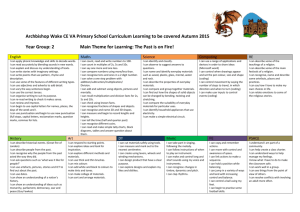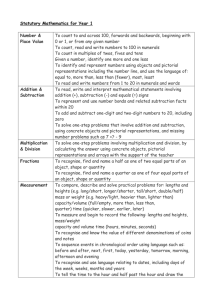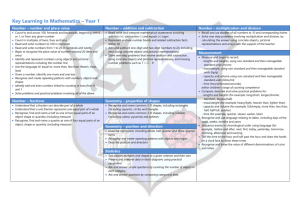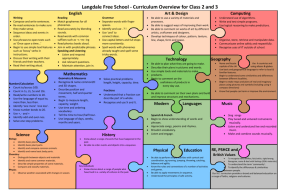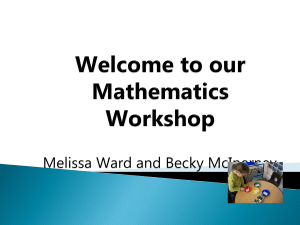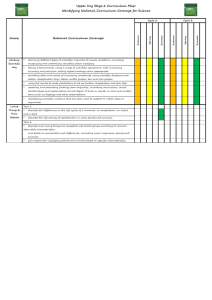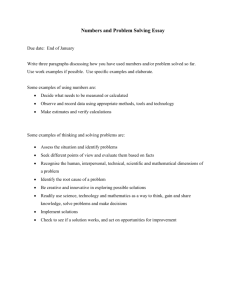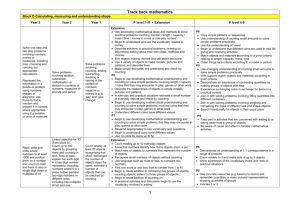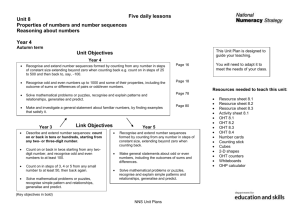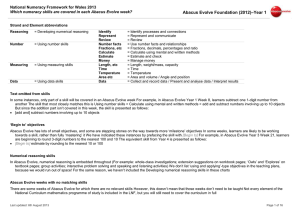Numeracy checklist M8
advertisement
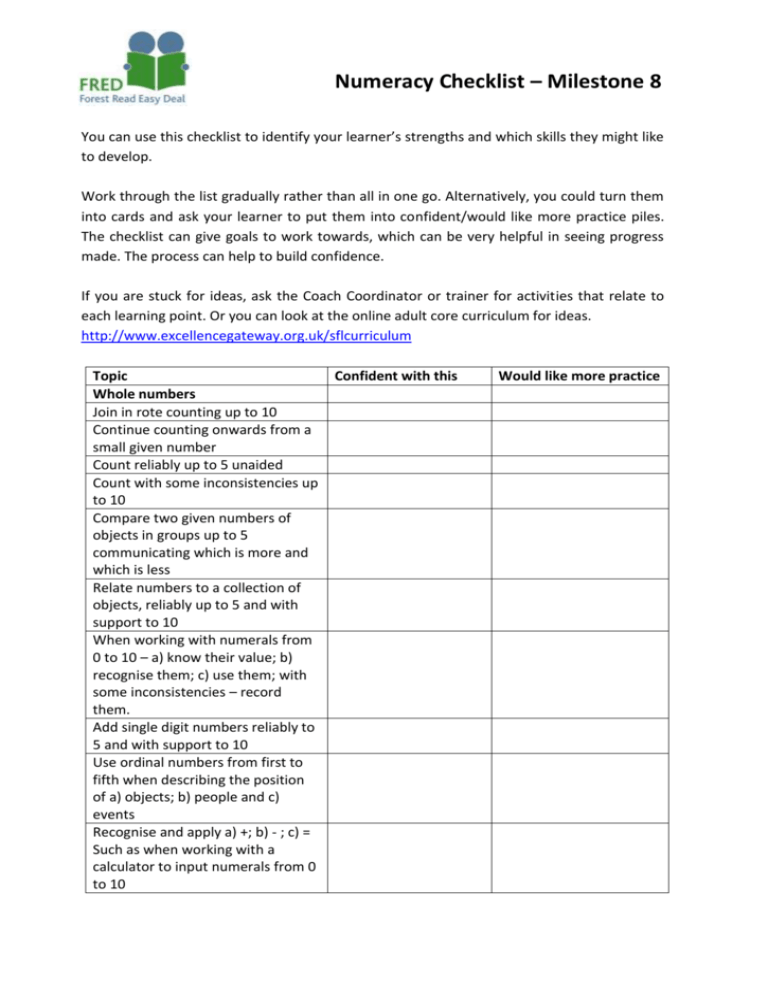
Numerac Numeracy Checklist – Milestone 8 You can use this checklist to identify your learner’s strengths and which skills they might like to develop. Work through the list gradually rather than all in one go. Alternatively, you could turn them into cards and ask your learner to put them into confident/would like more practice piles. The checklist can give goals to work towards, which can be very helpful in seeing progress made. The process can help to build confidence. If you are stuck for ideas, ask the Coach Coordinator or trainer for activities that relate to each learning point. Or you can look at the online adult core curriculum for ideas. http://www.excellencegateway.org.uk/sflcurriculum Topic Whole numbers Join in rote counting up to 10 Continue counting onwards from a small given number Count reliably up to 5 unaided Count with some inconsistencies up to 10 Compare two given numbers of objects in groups up to 5 communicating which is more and which is less Relate numbers to a collection of objects, reliably up to 5 and with support to 10 When working with numerals from 0 to 10 – a) know their value; b) recognise them; c) use them; with some inconsistencies – record them. Add single digit numbers reliably to 5 and with support to 10 Use ordinal numbers from first to fifth when describing the position of a) objects; b) people and c) events Recognise and apply a) +; b) - ; c) = Such as when working with a calculator to input numerals from 0 to 10 Confident with this Would like more practice Topic Confident with this Common measures Relate familiar events to: a) the names and days of the week; b) the names of significant times in the day Describe and compare the lengths and heights of 2 items, where the difference is marked, using a simple comparative vocabulary, including a) long, short, tall; b) longer, shorter, taller Describe and compare the weight of 2 items where the difference is marked, using a simple comparative vocabulary including: a) heavy, light; b) heavier and lighter Describe and compare differences in a) capacities; b) quantities Of 2 items where the difference is marked, using a simple comparative vocabulary including: a) full, empty; b) holds more than, holds less than; c) has more, has less Recognise and select: a: coins up to £2.00 b) notes up to £10.00 Shape and space Recognise some common 2-D shapes using a familiar and simple vocabulary to describe their shape, size and attributes, including: straight; curved; flat; larger; smaller; circle; square; rectangle; triangle Recognise some common 3D shapes as above, including: straight, curved, flat, larger, smaller, ball, box Identify and select a variety of shapes to make simple: a) models; b) pictures; c) patterns Understand and apply simple positional vocabulary, including: in, out, inside, outside, above, below, under, over, front, back, in front, behind Understand and apply direction of movement in simple statements, including: forwards, backwards, up, Would like more practice down, left, right Topic Data Recognise, describe and create lists of up to 5 items that are ordered: a) numerically; b) alphabetically; c) by pattern or sequence Sort objects by a single criterion, including: a) size; b) weight; c) quantity; d) colour; e) colour; f) function from collections of up to 5 objects or up to 10 objects with support. Use simple representations or diagrams for counting numbers up to 10 such as a number line Solve given problems with numbers up to 5 and, with support, up to 10 Estimate and check by counting numbers up to 5 and, with support, up to 10 such as when estimating the number of people in a group. Confident with this Would like more practice

